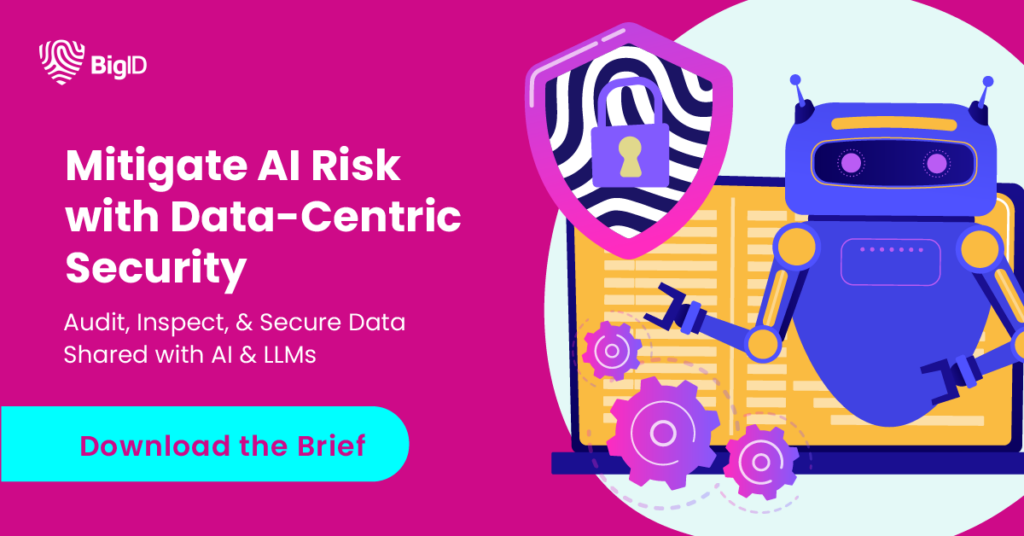It goes without saying that AI has countless benefits for businesses, but it doesn’t come without potential negatives. For example, there can be complexities when it comes to privacy, security, ethical, and legal matters.
So, how do we evaluate these issues, maximizing the benefits of AI while simultaneously minimizing its negative impact? This process is known as AI risk assessment and is essential to any responsible approach to AI.
Let’s explore this idea further, going into more detail about what exactly AI risk assessment is, why it matters, and how it can be implemented.
What Is AI Risk Assessment?
Generally speaking, AI risk assessment is any method taken to identify and evaluate potential threats and vulnerabilities that come with AI technologies. This can be done through a range of tools or practices, but is most effective when deployed through a formal framework.
Though risk assessment can, and should, apply to your business’s own AI usage, it’s also important in the context of any third-party vendors. You should know which vendors are utilizing AI so you can assess this use against privacy policies and take steps to control the associated hazards through effective risk management practices. These may include a lack of transparency in model training, algorithmic bias, misalignment with your company values, or noncompliance with AI governance.
What is the Link Between AI Risk Assessment, AI Risk Management and AI Governance?
AI governance describes broad safety policies produced to ensure AI tools are safe and ethical and stay that way. It forms the overall rules that govern AI research, development, and application. So, how is this different from AI risk assessment and management?
Both are individual parts of this overall governance. They’re separate processes within the wider discipline that find and prevent points of harm to AI systems.
Risk assessment, as we know, is the process of discovering and documenting the threats and weaknesses within the AI system and its processes.
AI risk management steps in after the potential threats have been assessed. It’s the process of responding to the findings of the assessment, such as designing controls, policies, and mitigation strategies to reduce or remove the risks. While AI risk assessment is investigative, management is more action-based.
Together, these processes form the foundation of AI Trust, Risk, and Security Management (AI TRiSM) — a framework for applying risk governance in real-world scenarios.
For a practical look at how AI TRiSM can be implemented, see this blog post from BigID.
To put it simply:
- AI governance is the umbrella that sets the guidelines
- AI risk assessment identifies what could go wrong under these rules
- AI risk management addresses those risks in line with the rules
The Importance of AI Risk Assessment for Responsible AI Use
In recent years, there’s been a noticeable increase in the uptake of AI, with its benefits (such as innovation and efficiency) proving too hard to resist. Over 60% of business owners expressed their belief that the technology will improve customer relationships and increase productivity.
While pursuing these advantages, however, it’s vital not to forget to gauge and tackle associated risks. A solid risk assessment and management framework will help combat this friction between AI’s pros and cons, and give you the confidence to tap into its potential without jeopardizing ethics or privacy.
Let’s take a look at some of the problems associated with AI that risk assessment and management processes aim to tackle.
A Closer Look at Risks Associated With AI
Before you plan how to evaluate and manage AI risks, you first must have a solid understanding of what these are and how to spot them. While some of them are obvious, others are more subtle.
Generally, threats fall into one of three categories: how the AI is trained, how it interacts with users, and the data that it relies upon. These factors need to be carefully controlled in order to avoid ethical breaches, legal consequences, reputational harm, or operational failures.
Data Risks
Artificial intelligence relies on data to function. But, as with any data set, these can be exposed to breaches and cybersecurity attacks or bias. Therefore, all data used by AI must have integrity, privacy, and security built in from the very beginning.
- Data Integrity: AI models are trained using vast amounts of data, so their performance is only as reliable as what is initially put in. If the input data is skewed, biased, or distorted, this will follow through into the results, creating false or inaccurate information that can damage an organization’s performance or reputation.
- Data Privacy: It’s common nowadays for AI systems to handle sensitive data or Personally Identifiable Information (PII), as this provides the opportunity to vastly improve personalization and decision-making. But, as with any use of personal information, this comes with the threat of privacy breaches, which could lead to regulatory or legal consequences.
- Data Security: AI systems are a prime target for cybercriminals and threat actors because of the high value of data they process and store. Without the right risk mitigation strategy, the systems can fall victim to security breaches such as model inversion attacks or data poisoning, where data is deliberately manipulated to corrupt outcomes.
Training Risks
How an AI model is trained determines its future behavior and performance, so it’s crucial to get this initial step right. Poor training processes can lead to long-term harm. All training data must be high-quality and transparent to avoid potential issues.
- Model bias and discrimination: As in any context, bias can lead to discrimination with the potential to cause real harm. Unfortunately, AI can unintentionally become biased depending on the data it’s trained with. If its sources are non-representative, its answers can be discriminatory as a result, which is a risk that needs to be addressed in AI development.
- Model drift: Like humans, AI models age and can become less accurate and consistent as data deviates from what they were originally trained on. This should be monitored over time to avoid degrading performance.
- Lack of transparency: AI systems are complex, and it can be hard to determine how they make decisions at times. This may be risky in regulated industries where accountability is paramount, as it impedes bias detection and erodes trust in the models.
Interaction Risks
By their nature, AI systems are highly interactive, which can come with additional threats beyond those associated with traditional information sources, like search engines. Because of this, it’s important to ensure the practice of using them doesn’t create unintended consequences.
- Misuse or misinterpretation: Despite their usefulness, relying too heavily on AI-generated outputs has safety risks, particularly if users aren’t aware of the model’s limitations. Without the right education on system boundaries, using AI can result in bad decisions and false information.
- Autonomy risks: Perhaps the most common misgiving surrounding the use of AI is around how independent it is. In some cases, systems may become unpredictable or generate outputs that conflict with organizational or user intentions. Therefore, it’s essential to be able to oversee and override results.
Adherence to Regulatory Compliance
As AI usage expands, so do the laws regulating it, and non-compliance poses serious consequences, ranging from reputational damage to legal action and hefty fines.
So, what are the main areas you need to watch out for in your AI risk assessment? Generally, elements like using unvetted data, failing to explain AI decisions, and not documenting this process are what regulators look out for, though the specifics depend on the individual legislation.
Some of the most widely known standards include the GDPR, the EU AI Act, and some sector-specific laws. These often include consequences for using non-compliant third-party tools too, so this is something to remain vigilant of in AI security and during AI deployment.
To learn more about the rules you need to be aware of, read our guide to global AI regulations in 2025.
Effective AI Risk Assessment Framework Best Practices
Lay Out AI Use Cases and Objectives
It’s no good using AI systems without properly understanding their intended use and capabilities. Start with a thorough investigation into which AI models are used by your organization as well as the third parties you work with. Find out what they’re designed to do and the context in which they operate. This will provide a strong foundation on which to identify and evaluate their potential risks.
Locate Possible Threats
Go through the entire AI lifecycle, from training and deployment to ongoing use, and evaluate risks at every stage. What are the potential data threats involved? How is the model performing? Are there any issues with user interaction? This part of the assessment is about creating a comprehensive list of all possible sticking points that may be worth investigating further.
Categorize and Prioritize Risks
Once you know every possible risk you may be dealing with, you can begin to place them into categories based on their severity or the likelihood that they will evolve into a genuine issue. This will help you to understand which risks are a priority to manage and remediate.
Align Risks With Regulatory and Ethical Guidelines
How do the risks you’ve identified and prioritized relate to current laws and ethical principles? Your assessment needs to align with applicable regulations, industry standards, and emerging AI governance frameworks to avoid non-compliance and build trust in AI security. This alignment forms a solid base for effective risk management as your AI systems evolve.
Formulate Your AI Risk Management Frameworks
Of course, it’s not enough to merely assess the risks associated with your AI usage — you must now take steps to monitor and control them (risk management, in other words). This could include anything from cybersecurity measures to bias audits to employee education.
To learn more about combating artificial intelligence threats, discover our full post on effective AI risk management frameworks and strategies.
Ongoing Monitoring and Review
AI systems evolve, and so should your risk assessment processes. Going through your assessment framework isn’t a one-off activity — it should be regularly reviewed and monitored to remain up-to-date with shifting risks and ensure no emerging threats or vulnerabilities are missed.
BigID Makes AI Risk Management Framework (RMF) Easily Manageable
As mentioned, AI risk assessment isn’t just about internal systems; it’s about your entire data ecosystem. More and more of your third-party vendors will be utilizing AI, so visibility into how and where it’s being used is crucial to stay on top of governance.
BigID gives you tools to uncover and manage AI risk at scale, with a platform that’s recognized by analysts and trusted by customers, from global banks to top universities.
It helps you automatically identify where AI models are in use (both in-house and across vendors), assess how data is being handled, and ensure compliance with evolving regulations and ethical standards.
Make AI risk transparent and easy to control, so you can innovate with confidence and enjoy the spoils of artificial intelligence without compromise.
Schedule a demo to get started today.


